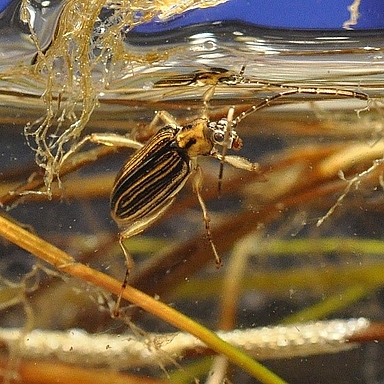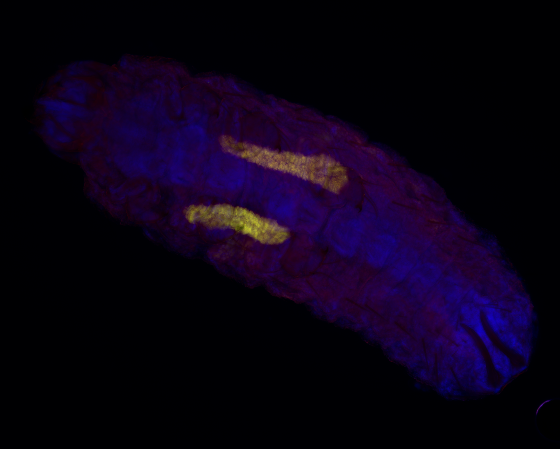Project 14.1

- PhD student: Ana Simão Pinto de Carvalho
- Supervisor: Martin Kaltenpoth
- Co-Supervisors: Christof Niehrs
- Further TAC-members: Annika Guse
- Research Group
We will use the semi-aquatic reed beetles (Coleoptera, Chrysomelidae, Donaciinae) and their bacterial symbionts to study the regulation of symbiont-provided benefits and the extra- to intracellular transition of these bacteria. We will compare host and symbiont gene expression in different tissues, life stages and species across the reed-beetle phylogeny. Moreover, we will identify host and symbiont intervening receptors and ligands during symbiont internalization using heterologous expression systems and RNAi mediated knockdowns.
The symbiotic relationship between animals and bacteria can play a major role in the diversification of animal ecological niche. This is apparent in several insects in which the requirements to explore an ecological niche are complemented by the presence of symbionts.
In this project, we will use the semi-aquatic reed-beetles (Coleoptera, Chrysomelidae, Donaciinae) and their intracellular bacterial symbionts as a system to study host-symbiont interactions.
The symbionts of the reed-beetles are mainly inside cells of specialized Malpighian tubules in the adult beetles. However, in the eggs, the symbionts are extracellular, in a cap that is eaten upon larval emergence. The symbionts then colonize specialized organs in the larval gut from where they will transition to the Malpighian tubules at later stages. The larvae develop under water, feeding on the sap of the of aquatic or semi-aquatic host plants. The adult beetles feed mostly on leaves of the same plant, which also serves as oviposition site.
There are thus two interesting transitions in this system: extra- to intracellular on the part of the symbiont and sap to leaf feeding on the part of the beetle. The former allows us to study how the symbionts transition from extra- to intracellular, while the latter allows us to study symbiont-provided life stage specific benefits.
As the symbionts transition from being extra- to intracellular, they need to be recognized and internalized by the host cell. We aim to identify the putative host receptors and symbiont ligands that mediate host cell entry. This will be achieved by RNA sequencing (RNA-seq) of symbiotic and non-symbiotic organs and fluorescence in situ hybridization of early time-points post hatching. To further characterize the putative symbiont ligand, we will express it using E. coli as a heterologous expression system and study internalization in insect cell culture and early larvae. We will also validate the putative host-receptor by studying the impact of RNA interference mediated knock-down in the embryos on symbiont internalization.
While the larvae face the challenge of an amino acid poor diet, the adults face the digestion of the complex plant cell wall (PCW). Previous work has found that the symbionts of the reed beetles can complement this diet, as their genomes encode for several amino acid pathway. In some species, they also encode for pectinases, which can help digesting the PCW material. We aim to understand if and how symbiont gene expression changes between life stages and across different species of reed beetles. To do so, we will use RNA-seq to compare gene expression between different tissues, life stages and species of reed beetles.
With the reed beetle system, we have the opportunity of studying the regulation of host cell entry in a symbiosis context. Additionally, we can also explore the regulation of symbiont provided benefits across different life stages and species. With the project described above, we aim to contribute to the understanding of the molecular bases of symbiosis establishment and evolution.
